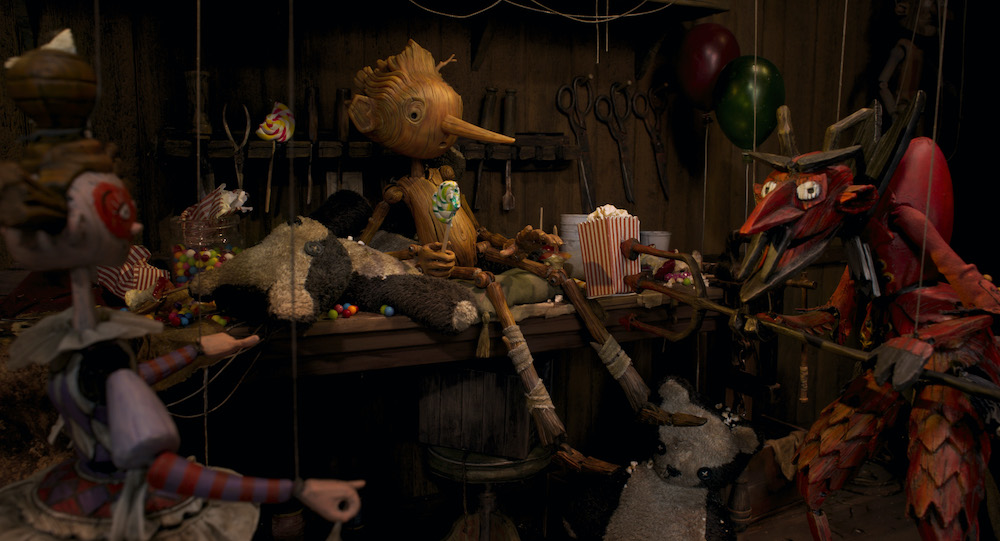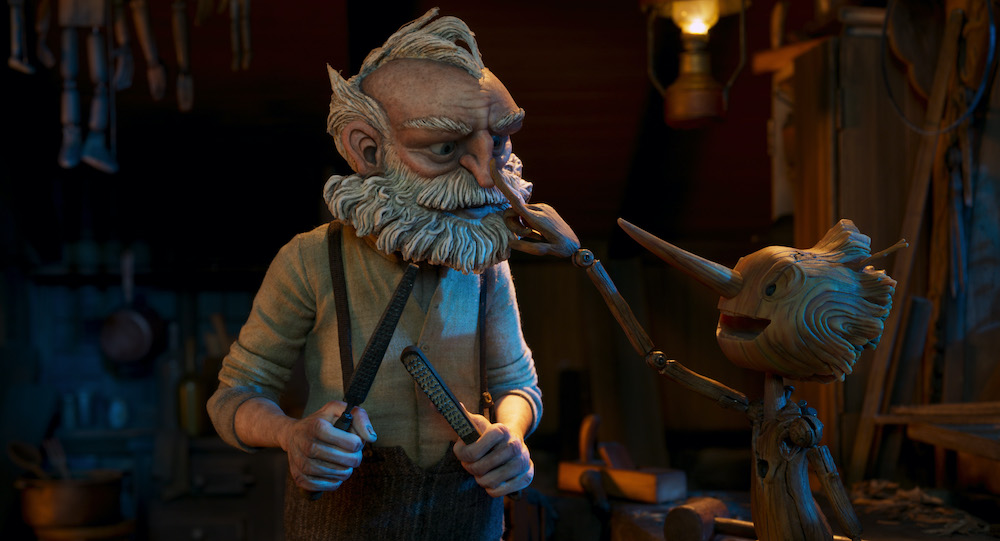Based on the 1883 fable by Carlo Collodi, Netflix’s ‘Guillermo del Toro’s Pinocchio’ is a fantasy film that follows a wooden boy’s adventures after a wood sprite brings it to life. Geppetto, a woodcarver, grieves his son’s loss for several years and feels sad due to his untimely death. One night, Geppetto carves a wood puppet similar to his son, Carlo, in the hopes of being with him. The magical sprite sympathizes with Geppetto and gives the man a second chance at being with someone akin to his son.
When he steps into the real world, Pinocchio, the wooden boy, realizes that people are not his friends. Even Geppetto doesn’t entirely understand Pinocchio, which causes a rift between them. As the film progresses, we see Pinocchio embark on a quest to find himself while Geppetto follows the boy to mend their relationship. Since the book, ‘The Adventures of Pinocchio,’ came out, there have been numerous adaptations in the form of movies and TV shows. While most of them are standalone renditions, there are a few sequels too. So, is ‘Guillermo del Toro’s Pinocchio’ a sequel, reboot, or retelling? Let us find out.
Del Toro’s Pinocchio: A Familiar Tale Gets a Darker Twist
‘Guillermo del Toro’s Pinocchio’ is a retelling of ‘The Adventures of Pinocchio,’ but is vastly different from the usual adaptations. The film’s screenplay and script are written by Guillermo del Toro, Patrick McHale, and Matthew Robbins. One of the core facets of Pinocchio from the original story is his desire to possess a human body. Guillermo del Toro did not want his rendition to go along with the same thought. The writer-director told Vanity Fair, “To me, it’s essential to counter the idea that you have to change into a flesh-and-blood child to be a real human.” He further explained, “All you need to be human is to really behave like one, you know? I have never believed that transformation [should] be demanded to gain love.”

Besides creating a complex character, the Academy Award-winning director wanted to touch on profound and relevant subjects today. So, he set the film in Italy during the 1930s when fascism was rising in the country, and Benito Mussolini was the dictator. While speaking to Collider, he said, “It’s set against a very different backdrop that illuminates a different type of paternal structure. It’s during the time of war, during the rise of Mussolini, and it’s a very lethal form of controlling paternity. It has a depth and a resonance and a poignancy that will be very much its own.”
On the technical aspect, del Toro chose to go with the stop-motion style because he wanted the process to be more organic. He also wanted to create a process where the animators feel connected with the puppets while filming. In an interview with Indie Wire, he said, “We directed it so that the animator could interface with that puppet, so they were not just printed faces but had all the vectors of a miniature face. It was almost like clockwork. That creates a connection that is really important between the animator and the puppet.”
Thus, to reiterate, ‘Guillermo del Toro’s Pinocchio’ is a retelling of the classic tale. However, it involves a slightly different narrative and character arcs, which are more profound than the original. The writer-director uses the stop-motion format instead of CG to add a layer of realism to the characters and the overall backdrop.
Read More: When and Where Does Guillermo del Toro’s Pinocchio Take Place?


You must be logged in to post a comment.